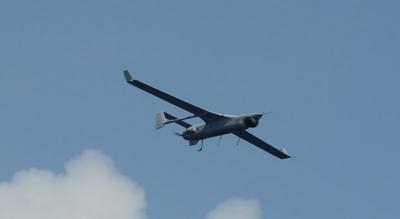Mon, Jun 03, 2013
RQ-21A STUAS Greenlighted For Low Rate Initial Production
The Department of the Navy said recently that the RQ-21A Small Tactical Unmanned Aircraft System (STUAS) received Milestone C approval authorizing the start of low rate initial production. With MS C approval, the RQ-21A program, managed by the Navy and Marine Corps STUAS program office (PMA-263) at NAS Patuxent River, enters the production and deployment phase of the acquisition timeline, according to the PMA-263 Program Manager Col. Jim Rector.

“This milestone allows us to provide our warfighter with a unique capability – an organic UAS capable of operations from both land and sea,” said Rector. “The RQ-21A will provide persistent maritime and land-based tactical Reconnaissance, Surveillance, and Target Acquisition data collection and dissemination capabilities.”
The Navy awarded Insitu, Inc., an Engineering Manufacturing Development (EMD) contract for STUAS in July 2010. Since then, the government/industry team has executed land-based developmental tests (DT), operational tests at China Lake, Calif. in December 2012 and conducted the first sea-based DT from USS Mesa Verde (LPD 19) in February. Concurrently, Marines are flying an Early Operational Capability (EOC) system at Twenty Nine Palms, CA. for pre-deployment preparation. Lessons learned from EOC will be applied to operational missions in theater.
The aircraft is based on Insitu’s Scan Eagle UAS, which has flown more than 245,000 hours in support of Navy and Marine Corps forward deployed forces via a services contract. The RQ-21A system has a 25 pound payload capacity, ground control system, catapult launcher and unique recovery system, known as Skyhook, allowing the aircraft to recover without a runway. The RQ-21A includes Day/Night Full Motion Video (FMV) cameras, infrared marker and laser range finder, and Automatic Identification System (AIS) receivers. The ability to rapidly integrate payloads allows warfighters to quickly insert the most advanced and relevant payload for their land/maritime missions and counter-warfare actions.
“The expeditionary nature of the RQ-21A makes it possible to deploy a multi-intelligence capable UAS with minimal footprint, ideal for amphibious operations such as a Marine Expeditionary Unit conducts,” Rector said. “The RQ-21A can be operated aboard ship, and then rapidly transported ashore as either a complete system or just a “spoke”, or control center, making this system ideally suited for humanitarian or combat operations, where getting real-time intelligence to the on-scene commander is crucial.”
The DoN plans to purchase a total of 36 STUAS systems, each with five aircraft. Initial Operational Capability is scheduled for second quarter fiscal year 2014.
(Image provided by the U.S. Navy)
More News
Pilot Also Reported That Due To A Fuel Leak, The Auxiliary Fuel Tanks Were Not Used On June 4, 2025, at 13:41 eastern daylight time, a Piper PA-23, N2109P, was substantially damage>[...]
From 2023 (YouTube Edition): Reflections on War’s Collective Lessons and Cyclical Nature The exigencies of war ought be colorblind. Inane social-constructs the likes of racis>[...]
Pilot Reported That He Was Unfamiliar With The Single Seat Amateur-Built Airplane And His Intent Was To Perform High-Speed Taxi Testing Analysis: The pilot reported that he was unf>[...]
From 2023 (YouTube Edition): First Kits to Ship October 2023 Having formerly resurrected the storied shape of the Ryan ST—in effigy, anyway—Montrose, Colorado-based Tim>[...]
Performance-Based Navigation (PBN) [ICAO] Area navigation based on performance requirements for aircraft operating along an ATS route, on an instrument approach procedure or in a d>[...]
 NTSB Prelim: Piper PA-23
NTSB Prelim: Piper PA-23 Classic Aero-TV: One Mans Vietnam
Classic Aero-TV: One Mans Vietnam NTSB Final Report: Capella Aircraft Corp FW1C50
NTSB Final Report: Capella Aircraft Corp FW1C50 Classic Aero-TV: Timber Tiger Touts Curtiss Jenny Replicas
Classic Aero-TV: Timber Tiger Touts Curtiss Jenny Replicas ANN's Daily Aero-Term (07.04.25): Performance-Based Navigation (PBN) [ICAO]
ANN's Daily Aero-Term (07.04.25): Performance-Based Navigation (PBN) [ICAO]



